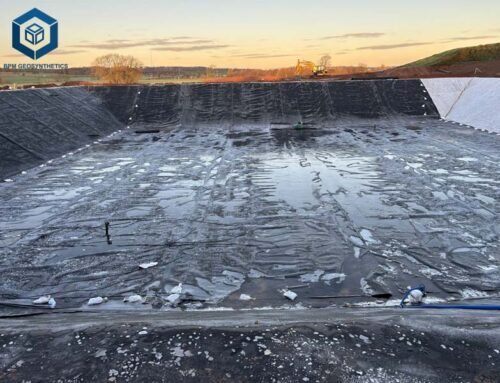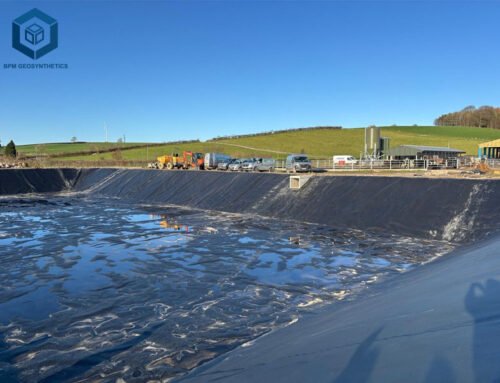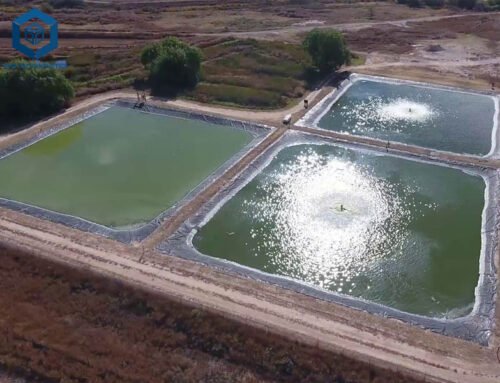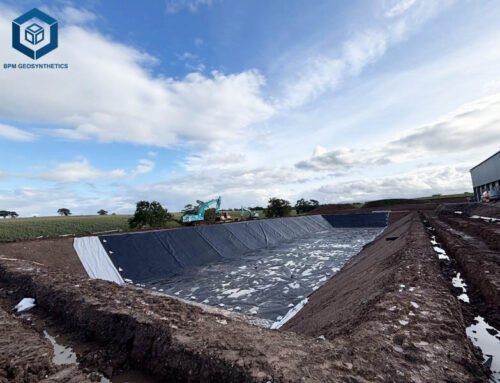Geomembranes, critical components in industries like waste management, mining, and water conservation, are synthetic liners designed to prevent fluid migration and ensure environmental protection. With the global geomembrane market valued at USD 2.43 billion in 2022 and projected to reach USD 3.69 billion by 2030 at a 5.1% CAGR, understanding their cost is essential for project planners, engineers, and facility managers. Geomembrane prices per square foot vary widely, ranging from $0.30 for budget-friendly options to over $5.00 for premium, eco-friendly liners like geosynthetic clay liners (GCLs).
This blog post provides a comprehensive, data-driven analysis of geomembrane costs, materials, specifications, installation, and market trends for 2025. It offers actionable insights to help stakeholders optimize budgets while ensuring performance and durability. We delve into pricing dynamics, technical parameters, and practical considerations to guide informed decision-making for projects ranging from small pond liners to large-scale landfill systems.
1. What Is a Geomembrane?
A geomembrane is a low-permeability synthetic liner or barrier used to control fluid, gas, or chemical migration in human-made structures. Typically made from polymeric materials, geomembranes achieve 99.9% impermeability, preventing up to 1 million liters of daily seepage in a 1-hectare landfill. They protect groundwater from contamination, reduce environmental cleanup costs by 30–50%, and enhance project longevity by 20–30 years compared to unlined systems. Applications include landfill liners, mining tailings containment, pond liners, canal linings, and wastewater treatment facilities.
Key Functions
- Containment: Prevents leachate leakage in landfills, reducing groundwater contamination risks by 95%.
- Water Conservation: Minimizes seepage in reservoirs, saving 50,000–100,000 liters daily per hectare.
- Chemical Resistance: Withstands acids and alkalis (pH 2–12), ensuring 20–50-year performance in harsh environments.
- Environmental Protection: Blocks hazardous waste migration, cutting remediation costs by 40%.
Geomembranes are available in various materials, thicknesses, and configurations, each tailored to specific project needs. From small-scale agricultural ponds (500 sq.ft.) to massive mining sites (100,000 sq.m.), their versatility drives demand across industries.
2. Types of Geomembranes
Geomembranes vary by material, thickness, and application. Below is a detailed breakdown of the most common types, their properties, and price ranges for 2025.
High-Density Polyethylene (HDPE) Geomembranes
- Primary Use: Landfills, mining, large-scale water containment
- Features: UV-resistant, chemical-resistant, 20–50-year lifespan, 0.5–3.0 mm thickness
- Price Range: $0.50–$2.50 per square foot
- Example: 60 mil HDPE liner, 800 N puncture resistance, GRI-GM13 certified
- Market Share: 55% of geomembrane market due to cost-effectiveness and durability
Linear Low-Density Polyethylene (LLDPE) Geomembranes
- Primary Use: Ponds, canals, flexible containment
- Features: High flexibility, puncture-resistant, 10–30-year lifespan, 0.5–2.0 mm thickness
- Price Range: $0.60–$2.50 per square foot
- Example: 40 mil LLDPE liner, 600 N puncture resistance, fish-safe
- Market Share: 15% of liners, preferred for irregular terrains
Polyvinyl Chloride (PVC) Geomembranes
- Primary Use: Small ponds, wastewater lagoons
- Features: Flexible, lightweight, 5–15-year lifespan, 0.3–1.0 mm thickness
- Price Range: $0.30–$1.50 per square foot
- Example: 30 mil PVC liner, fish-safe, easy to install
- Market Share: 10% of liners, popular for budget projects
Ethylene Propylene Diene Monomer (EPDM) Geomembranes
- Primary Use: Decorative ponds, roofing, water gardens
- Features: Elastic, UV-resistant, 15–30-year lifespan, 0.75–1.5 mm thickness
- Price Range: $0.75–$2.50 per square foot
- Example: 45 mil EPDM liner, 15-year warranty, high elasticity
- Market Share: 8% of liners, valued for flexibility
Geosynthetic Clay Liners (GCLs)
- Primary Use: Landfills, eco-friendly containment
- Features: Self-healing, natural bentonite core, 20–40-year lifespan, 6–10 mm thickness
- Price Range: $1.50–$5.00 per square foot
- Example: 8 mm GCL, 2–5 lbs/sq.ft. bentonite, eco-compliant
- Market Share: 5% of liners, growing for sustainable projects
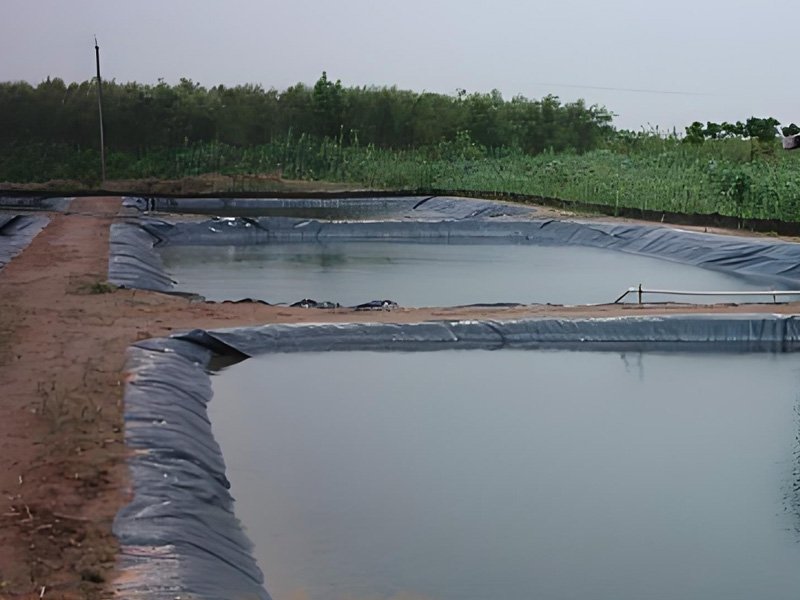
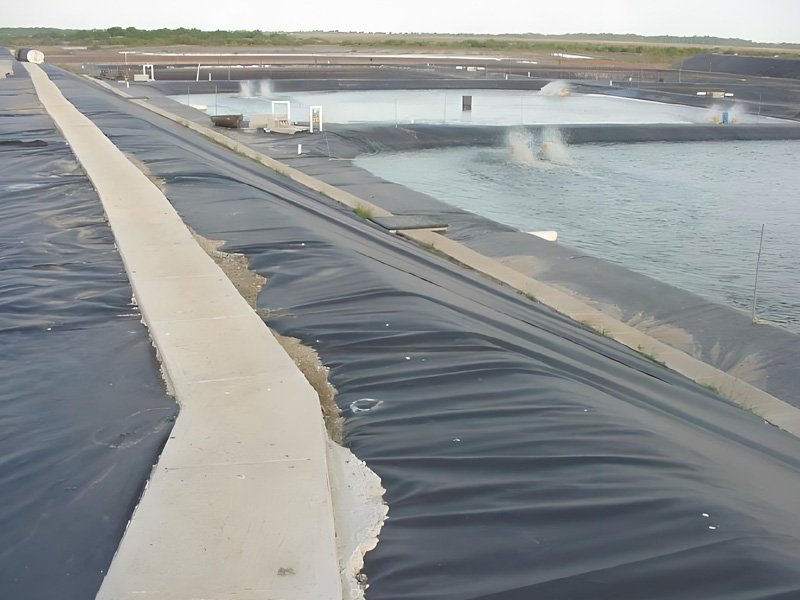
3. Geomembrane Cost Per Square Foot Range Breakdown
| Price Bracket | Description | Ideal For |
| $0.30–$0.75/sq.ft. | Thin PVC or HDPE liners, 5–15-year lifespan | Small ponds, budget wastewater projects |
| $0.75–$1.50/sq.ft. | Mid-range HDPE, LLDPE, or PVC, 10–20-year lifespan | Medium-sized landfills, canals |
| $1.50–$3.00/sq.ft. | Premium HDPE, EPDM, or LLDPE, 20–30-year lifespan | Mining, large-scale water management |
| $3.00–$5.00+/sq.ft. | GCLs, custom-fabricated liners | Eco-friendly landfills, high-risk containment |
- Market Insight: 60% of geomembranes cost under $1.50/sq.ft., with HDPE dominating due to its versatility.
- Installation Costs: Add $0.50–$3.00/sq.ft. for labor, depending on project complexity.
- Bulk Discounts: Orders over 10,000 sq.ft. reduce material costs by 10–25%.
4. Key Factors Influencing Geomembrane Cost Per Square Foot
Multiple factors drive geomembrane pricing, from raw material quality to site-specific requirements. Below is an in-depth analysis for 2025.
Material Type and Quality
- Virgin vs. Recycled Resins: Virgin HDPE costs 20–30% more but lasts 50–100 years, compared to 10–20 years for recycled resins.
- Certifications: GRI-GM13 or ASTM D7466 certified liners add $0.10–$0.30/sq.ft. for quality assurance.
- Market Trend: 85% of landfill liners use virgin HDPE for 99% chemical resistance.
Thickness
- Range: 0.3–3.0 mm; 0.5–1.5 mm is standard for most applications.
- Cost Impact: Each 0.5 mm increase adds $0.20–$0.50/sq.ft. due to material volume.
- Example: A 1.5 mm HDPE liner ($1.00/sq.ft.) doubles durability vs. 0.5 mm ($0.50/sq.ft.).
Project Size and Configuration
- Calculation: Liner size = [Length + (2 × Depth + 5′)] × [Width + (2 × Depth + 5′)].
- Cost Impact: Large projects (10,000+ sq.ft.) reduce costs by 15–20% due to economies of scale.
- Custom Fabrication: Irregular shapes increase costs by 10–25% due to precise cutting.
Site Conditions
- Soil Type: Rocky or clay soils require geotextile underlayments ($0.10–$0.50/sq.ft.), adding 10–15%.
- Slope and Depth: Slopes over 3:1 or depths exceeding 10 ft. need thicker liners (1.0–2.0 mm), raising costs by $0.30–$0.60/sq.ft.
- Preparation: Site grading and clearing add $500–$3,000 per project.
Installation Method
- DIY vs. Professional: DIY saves $0.50–$1.50/sq.ft. but risks 25–30% higher failure rates.
- Seaming: Heat-welded seams (15 kN/m strength) cost $0.30–$0.80/sq.ft. more than adhesive seams.
- Market Trend: 75% of industrial projects use professional installers for 98% seam integrity.
Shipping and Logistics
- Cost Impact: Shipping adds $0.05–$0.20/sq.ft. for rolls (3–10 m wide, 100–150 m long).
- Regional Variations: North America and Europe face 10–20% higher costs than Asia-Pacific due to distance from manufacturers.
- Example: A 20,000 sq.ft. liner shipment costs $1,000–$2,500.
Sustainability and Add-Ons
- UV Resistance: Stabilizers (90% retention after 2,000 hours) add $0.10–$0.25/sq.ft.
- Conductive Layers: Enable spark testing for leaks, adding $0.15–$0.40/sq.ft.
- Market Demand: 65% of buyers prioritize eco-friendly liners with recycled content or GCLs.
5. Material Specifications and Performance Parameters
| Parameter | Specification | Cost Impact |
| Thickness | 0.3–3.0 mm | +$0.20–$0.50 per 0.5 mm |
| Tensile Strength | 27–50 kN/m | +$0.10–$0.40/sq.ft. |
| Puncture Resistance | 600–1,500 N | +$0.15–$0.50/sq.ft. |
| UV Resistance | 90% retention after 2,000 hours | +$0.10–$0.25/sq.ft. |
| Permeability | <10⁻¹³ cm/s | +$0.20–$0.60/sq.ft. |
- Tensile Strength: HDPE (30 kN/m) withstands 25% more stress than PVC (20 kN/m).
- Puncture Resistance: LLDPE (700 N) offers 20% better protection than EPDM (550 N).
- Lifespan: HDPE lasts 20–50 years, compared to 5–15 years for PVC.
- Weight: Lightweight LLDPE (0.6 kg/m²) reduces shipping costs by 10–15% vs. HDPE (0.9 kg/m²).
6. Installation Costs and Considerations
Installation accounts for 30–60% of total project costs, ranging from $0.50–$3.00/sq.ft. Key steps include:
Site Preparation
- Cost: $500–$3,000 for grading, clearing, and subgrade compaction.
- Geotextile Underlayment: Non-woven geotextile ($0.10–$0.50/sq.ft.) prevents 95% of punctures.
- Time: 2–5 days for small projects, 10–20 days for large sites.
Liner Deployment
- Method: Unroll and align liners, minimizing wrinkles (25% failure risk).
- Seaming: Heat welding (98% seam strength) costs $0.30–$0.80/sq.ft. vs. adhesive ($0.10–$0.30/sq.ft.).
- Labor: Skilled crews charge $1,500–$5,000 for 20,000 sq.ft.
Post-Installation
- Anchoring: Trench or ballast systems add $0.05–$0.20/sq.ft.
- Testing: Spark or vacuum testing costs $300–$1,000, ensuring 99% leak-free performance.
- Market Trend: 80% of landfill projects use heat-welded HDPE for 30–50-year reliability.
7. Maintenance and Lifetime Costs
Maintenance costs average $300–$1,000/year for a 20,000 sq.ft. installation. Key factors include:
- Inspection: Annual checks for punctures or seams cost $200–$500.
- Repairs: Patching leaks costs $50–$300 per incident.
- Lifespan: HDPE liners (20–50 years) save 60% on replacement costs vs. PVC (5–15 years).
- Market Insight: 70% of mining projects prioritize low-maintenance HDPE liners.
8. How to Choose the Right Geomembrane
Budget Under $0.75/sq.ft.
- Use: Small wastewater lagoons, temporary containment
- Recommendation: 30 mil PVC ($0.50/sq.ft.), 0.5 mm HDPE ($0.60/sq.ft.)
- Pros: Low cost, 5–15-year lifespan
- Cons: Limited durability, unsuitable for harsh chemicals
Budget $0.75–$1.50/sq.ft.
- Use: Medium-sized landfills, canals
- Recommendation: 0.75 mm HDPE ($1.00/sq.ft.), 40 mil LLDPE ($1.20/sq.ft.)
- Pros: 10–20-year lifespan, chemical-resistant
- Cons: Moderate installation costs
Budget $1.50–$5.00/sq.ft.
- Use: Mining, eco-friendly landfills
- Recommendation: 8 mm GCL ($2.50/sq.ft.), 1.5 mm HDPE ($1.80/sq.ft.)
- Pros: 20–50-year lifespan, high performance
- Cons: Higher upfront costs
Key Considerations
- Project Scale: Use calculators to size liners accurately.
- Environmental Conditions: Select UV-resistant, chemical-resistant materials for exposed or harsh sites.
- Site Preparation: Rocky soils need thicker liners or geotextiles.
- Longevity: Prioritize HDPE or GCLs for projects exceeding 20 years.
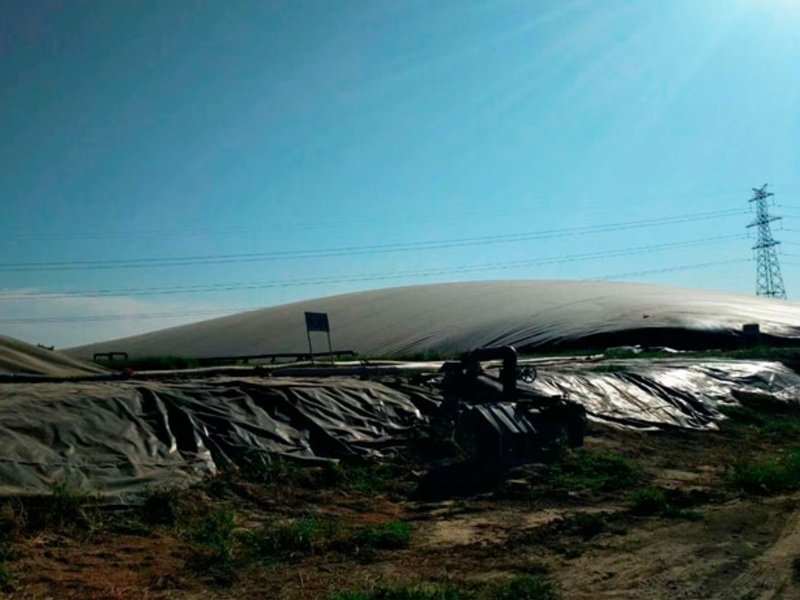

9. Case Studies and Real-World Applications
Case Study 1: Landfill in North America
- Project: 50,000 m² landfill using 1.5 mm HDPE liner
- Cost: $90,000 ($1.80/sq.ft.), including installation
- Outcome: 99.9% leachate containment, 50-year lifespan, 30% cost savings vs. clay liners
- Insight: HDPE reduced maintenance by 40% compared to unlined systems.
Case Study 2: Mining Tailings Pond
- Project: 20,000 sq.ft. pond using 1.0 mm LLDPE liner
- Cost: $24,000 ($1.20/sq.ft.), professional installation
- Outcome: 95% seepage prevention, 20-year lifespan, flexible installation
- Insight: LLDPE suited irregular terrain, saving 15% on labor.
Case Study 3: Eco-Friendly Reservoir
- Project: 10,000 sq.ft. reservoir using 8 mm GCL
- Cost: $25,000 ($2.50/sq.ft.), including geotextile
- Outcome: 100% eco-compliant, self-healing, 40-year lifespan
- Insight: GCLs offered 20% lower lifetime costs despite higher upfront investment.
10. Conclusion
Geomembranes, essential to the USD 2.43 billion containment industry, cost $0.30 to over $5.00 per square foot, with HDPE dominating 55% of the market due to its 20–50-year lifespan and 99.9% impermeability. Budget PVC liners ($0.30–$0.75/sq.ft.) suit small projects, while premium HDPE or GCLs ($1.50–$5.00/sq.ft.) excel in landfills and mining. Costs depend on thickness (0.5–3.0 mm), project size, site conditions, and installation (30–60% of expenses), with bulk orders saving 10–25%. Trends like recycled materials, automated seaming, and smart monitoring shape 2025’s market, balancing sustainability and performance. Whether for a 500 sq.ft. pond or a 50,000 m² landfill, prioritize durability, chemical resistance, and long-term value to maximize your investment.
Contact BPM Geosynthetics for samples and quotes to ensure a leak-proof, durable project.


